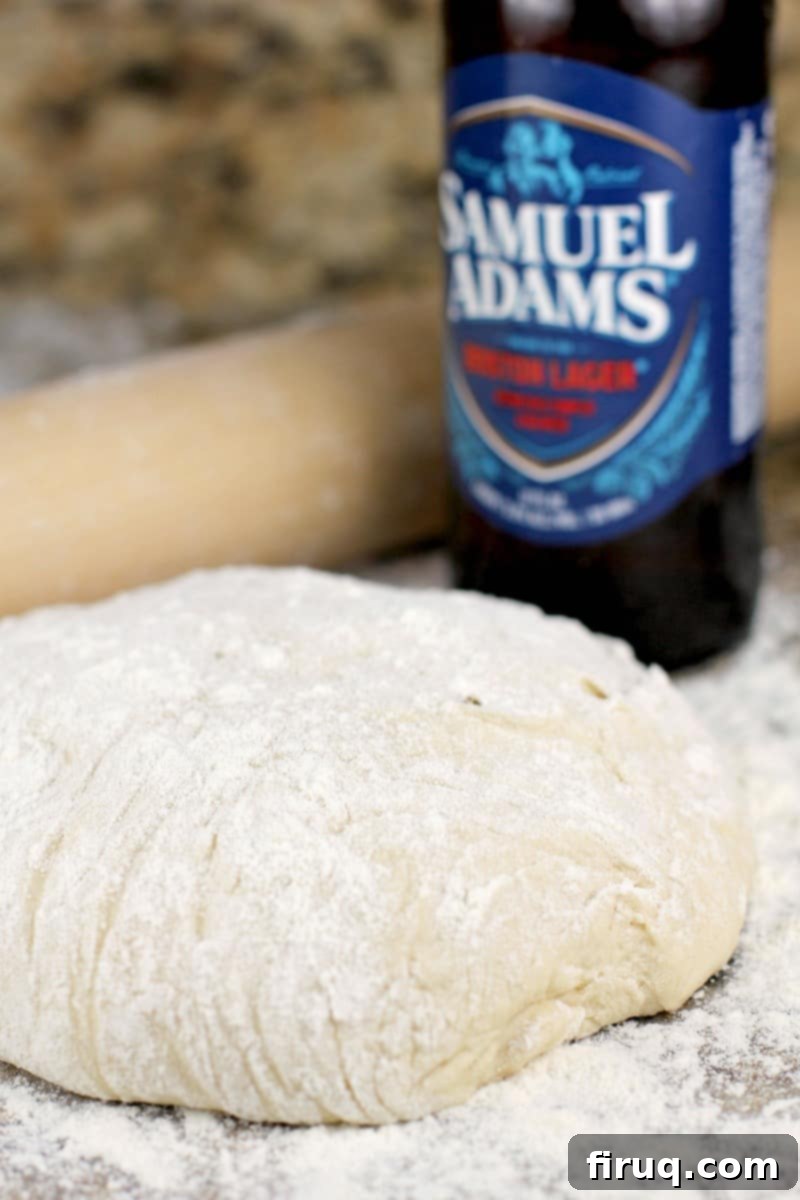Elevate Your Homemade Pizza: The Unforgettable Sam Adams Beer Pizza Dough
Discover the ultimate secret to extraordinary homemade pizza with our Sam Adams Beer Pizza Dough. This isn’t just any pizza dough; it’s a culinary masterpiece infused with the distinctive, rich flavor of Boston Lager and a subtle touch of honey. This recipe stands as my absolute favorite, a tried-and-true foundation for countless delicious pizza creations. It masterfully complements and enhances a wide array of pizza sauces and toppings, delivering incredible flavor combinations within a perfectly chewy, yet crisp, crust that will leave you craving more. Get ready to transform your regular pizza night into an unforgettable gastronomic experience.
This website uses affiliate links. See our Privacy Policy for more information.
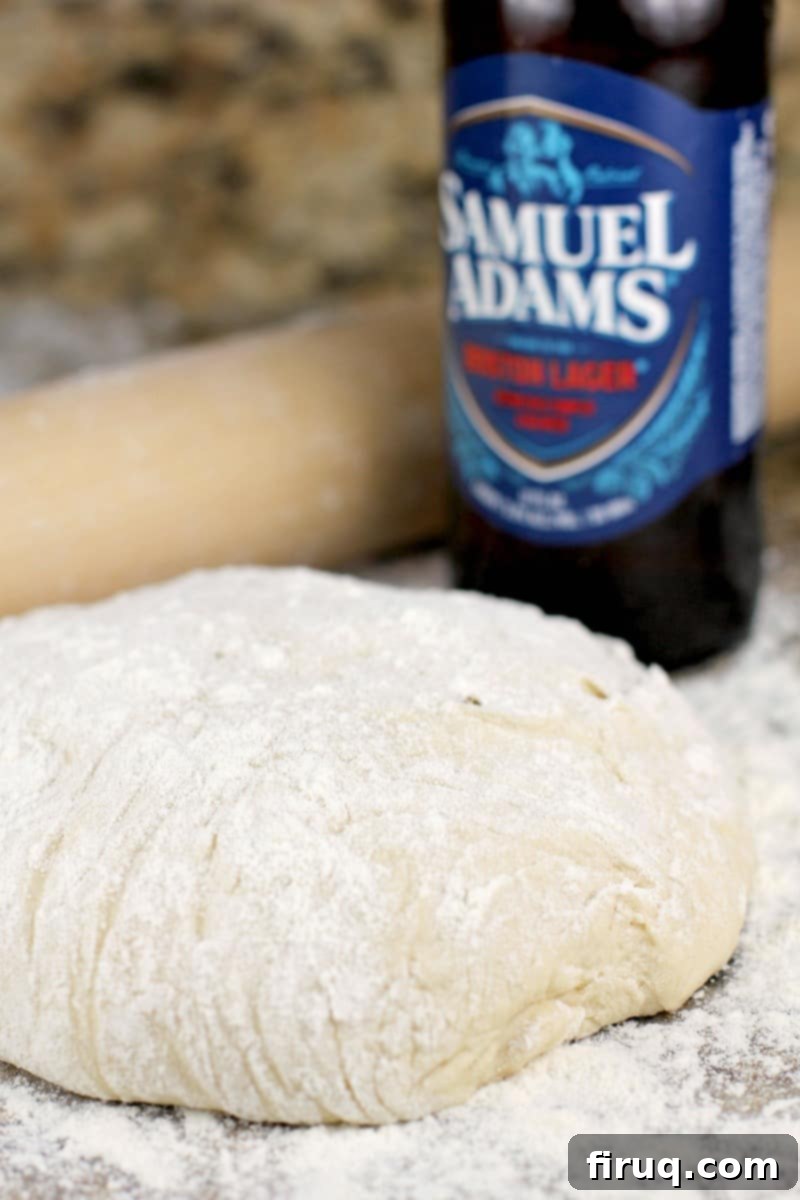
For years, my blog has been a testament to my profound pizza obsession, and this particular Sam Adams Beer Pizza Dough recipe has consistently been my go-to choice. It brings a unique depth of flavor and character to every pizza I craft, whether it’s a classic Margherita or one of my more adventurous, “crazy pizza ideas.” The infusion of Boston Lager doesn’t just add a hint of beer; it contributes a complex, malty undertone and a wonderful aroma that truly elevates the entire pizza experience.
If there’s an opportunity to incorporate beer into a recipe, rest assured, I will seize it. My culinary journey with beer has led me to some incredibly flavorful creations. I’ve successfully brined poultry with it, developed succulent barbecue sauces, whipped up rich bread dips, and even enhanced the flavor of sandwiches. Yes, I’ve even gone as far as using it for beer-can chicken, and the results were nothing short of spectacular. So, it was only a matter of time before this beloved ingredient found its way into my pizza dough. If you detect a strong sense of pride in my writing about this, it’s absolutely justified – the unique taste and texture this beer-infused dough delivers are truly something special.
Check out these 41 Recipes that Prove Beer is the Best Ingredient.

In our household, Friday night isn’t just any night; it’s sacred pizza night. This tradition is taken quite seriously, particularly by me! While sometimes it involves the convenience of ordering takeout, or the ease of using a store-bought crust or dough, there are those cherished occasions when I dedicate myself to making the pizza dough entirely from scratch. These are the nights that become truly “extra special,” transforming a simple meal into a delightful family ritual. The aroma of freshly baked dough fills the kitchen, promising a superior taste and a crust that’s perfectly tailored to our preferences.
For a long time, my go-to was a Whole Wheat Pizza Dough, which we adore for its robust flavor and wholesome texture. However, I felt the need to expand my pizza dough repertoire, seeking a versatile basic white dough for different types of pizzas. That’s when the idea of infusing it with beer struck me, adding not just a “special touch,” but an entirely new dimension of flavor. The Sam Adams Boston Lager doesn’t just provide liquid; its distinct malty character and subtle sweetness integrate beautifully with the other ingredients, creating a remarkably flavorful and unique crust that elevates every bite.
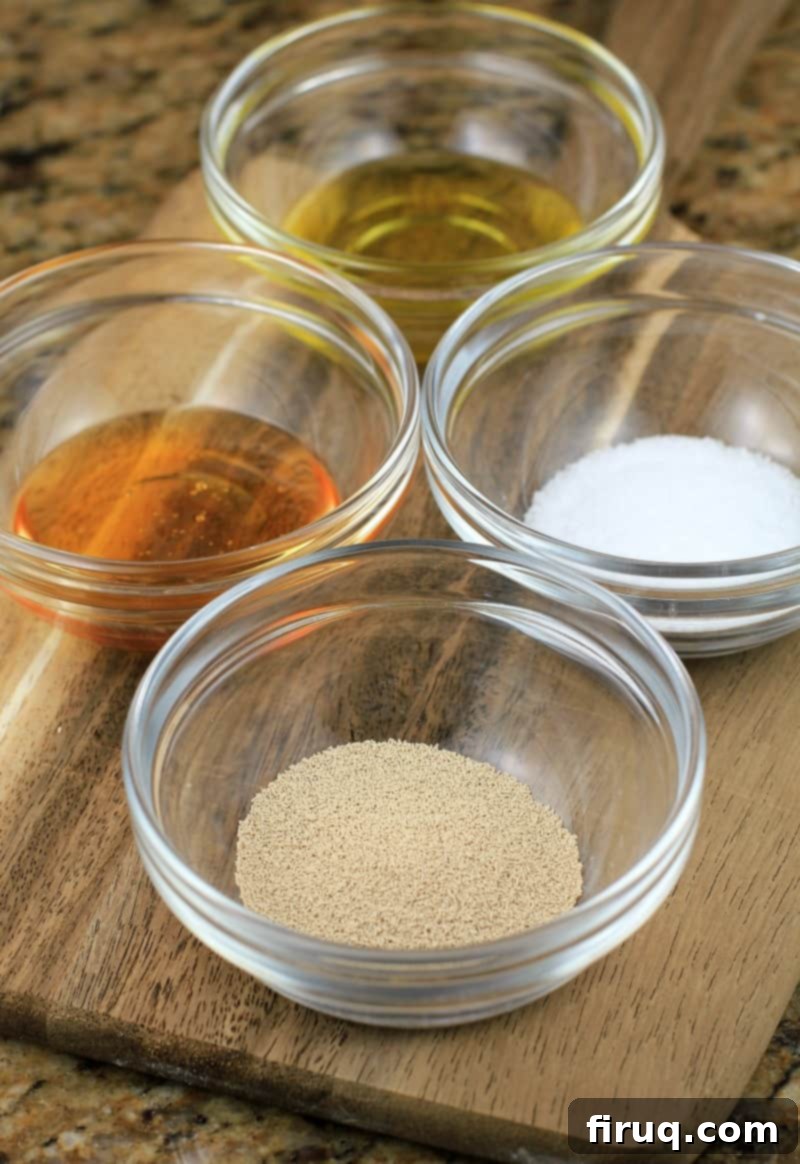
What is Sam Adams Boston Lager? The Heart of Our Dough
To truly appreciate this beer pizza dough, it’s essential to understand the star ingredient: Sam Adams Boston Lager. Produced by the Boston Beer Company since 1984, this isn’t just a beer; it’s a celebrated American craft brew. It’s an amber, Vienna-style lager, renowned for its full-bodied character and balanced flavor profile. Expect a delightful interplay of malty sweetness, subtle caramel notes, and a crisp, clean finish that isn’t overly hoppy. For many, it’s more than just a beverage; it’s the official beer of Red Sox baseball and a deeply ingrained Boston tradition. As a native of Boston, I can personally attest to its iconic status and quality.
The choice of Sam Adams Boston Lager for this dough is intentional. Its rich maltiness and slight sweetness provide a fantastic base flavor that beautifully complements the savory toppings of a pizza, without overpowering them. The beer’s yeast and sugars also contribute to the dough’s fermentation, helping it rise and develop a complex, airy texture. Interestingly, Samuel Adams, one of the United States’ Founding Fathers, was also a brewer. He inherited a brewery from his father in downtown Boston, making him a fitting namesake and face for this iconic Boston brew and, by extension, a perfect ingredient for a truly American homemade pizza dough.
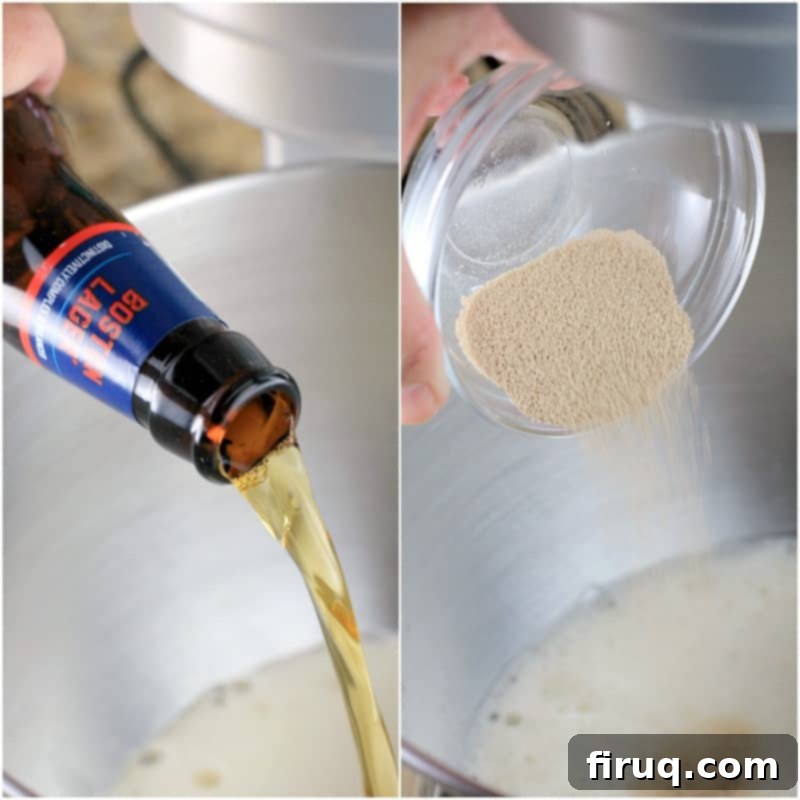
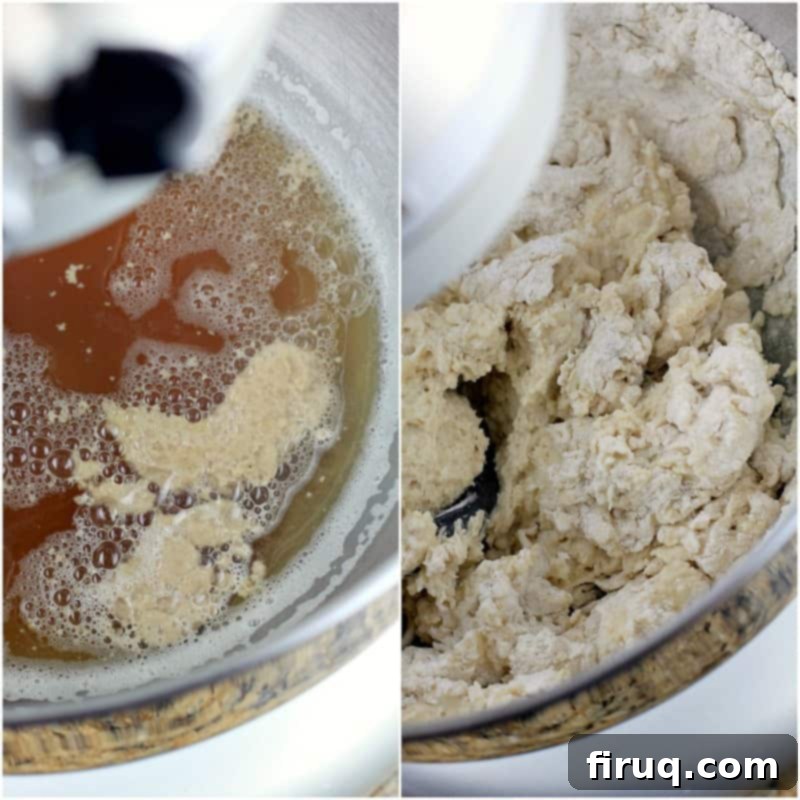
Crafting Flavor: Essential Beer Pizza Dough Ingredients
The beauty of homemade pizza dough lies in its simplicity, yet my recipe takes standard ingredients and elevates them with thoughtful additions for superior flavor and texture. Each component plays a crucial role in creating the ultimate Sam Adams Beer Pizza Dough:
- Sam Adams Boston Lager Beer: This isn’t just a liquid component; it’s the flavor backbone of our dough. Its malty sweetness and subtle bitterness add a rich, complex character that plain water simply cannot replicate. The beer’s natural sugars also provide extra food for the yeast, aiding in a robust fermentation and a more flavorful crust.
- Yeast (Rapid-Rise or Active Dry): Yeast is the magic behind any good dough, responsible for its rise and airy texture. Rapid-rise yeast is convenient as it can often be mixed directly with dry ingredients, saving time. Active dry yeast, however, requires proofing – dissolving it in warm liquid first to ensure it’s alive and active. We’ll detail how to do this for both types, guaranteeing your dough gets a fantastic lift.
- Honey: Beyond just a touch of sweetness, honey serves multiple purposes. It provides additional nourishment for the yeast, helping it to activate and multiply effectively. Its natural sugars also contribute to a beautiful golden-brown crust and a subtle, complementary flavor that pairs wonderfully with the malty notes of the beer.
- Extra Virgin Olive Oil: This ingredient is critical for both flavor and dough consistency. Olive oil adds a nuanced richness and aroma, enhancing the overall taste of the crust. Structurally, it contributes to the dough’s elasticity and tenderness, making it easier to work with and resulting in a softer interior texture while still allowing for a crisp exterior.
- Flour (00 Flour or All-Purpose): The type of flour significantly impacts the final texture of your crust. I highly recommend 00 flour, a finely milled Italian flour with a lower protein content. This produces a smoother, more elastic dough that is easier to stretch thinly and bakes into a delightfully crisp yet chewy crust. However, rest assured, good quality all-purpose flour works perfectly well too, yielding a delicious and satisfying result. Whether bleached or unbleached, the impact on this recipe is minimal.
- Kosher Salt: More than just a flavor enhancer, salt plays a vital role in yeast activity, controlling the fermentation rate and strengthening the gluten structure. It brings out the best in all the other ingredients, ensuring a well-seasoned and balanced crust.
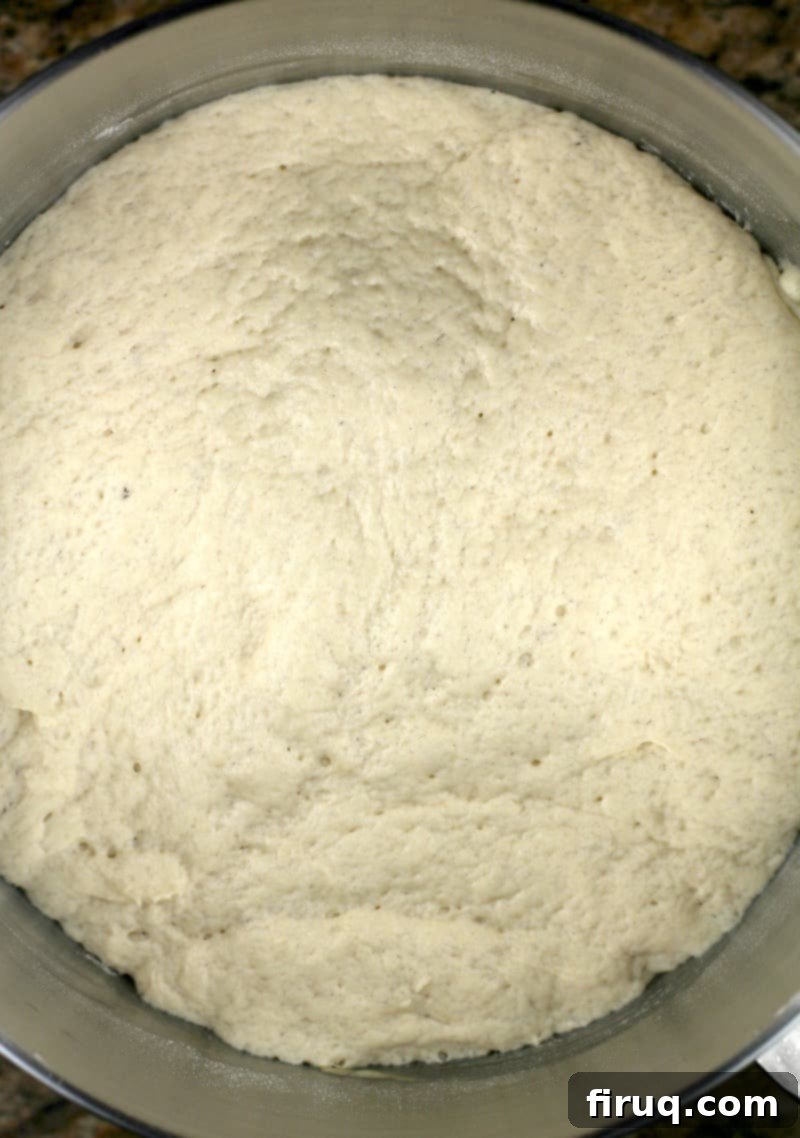
Unlocking the Perfect Crust: Steps to Make Homemade Pizza Dough
Making homemade pizza dough, especially one as flavorful as our Sam Adams version, is a rewarding process. Here’s a detailed breakdown of each step, ensuring you achieve a perfectly risen, elastic, and delicious dough every time:
- Activate the Yeast in Warm Beer: The first crucial step is to “wake up” the yeast. We do this by gently warming the Sam Adams beer and then introducing the yeast. The warmth and the beer’s sugars create an ideal environment for the yeast to become active. For rapid-rise yeast, a quick 2-minute proof is sufficient. If you’re using active dry yeast, allow it to sit in the warm beer for 5 minutes until it appears foamy and bubbly, indicating it’s alive and ready to work its magic. This ensures your dough will rise beautifully.
- Combine and Knead for Gluten Development: Once the yeast is active, add the remaining ingredients: honey, olive oil, flour, and salt. Now comes the kneading – a critical step for developing gluten. Gluten is what gives pizza dough its signature chewiness and elasticity, allowing it to be stretched thin without tearing. If you have a stand mixer fitted with a dough hook, it will do the hard work for you, efficiently kneading the dough for about 10 minutes until it’s smooth and pliable. If kneading by hand, use a sturdy wooden spoon and plenty of “elbow grease” for 15-20 minutes until the dough passes the windowpane test (you can stretch a small piece thin enough to see light through it without it tearing).
- First Rise: After kneading, form the dough into a ball and place it in a lightly oiled bowl, turning once to coat. Cover the bowl with a damp cloth or plastic wrap to prevent drying, and place it in a warm, draft-free spot. A slightly warm oven (turned off, or with just the light on) or near a sunny window works perfectly. Let the dough rise for 1.5 to 2 hours, or until it has visibly doubled in size. This initial rise allows the yeast to produce carbon dioxide, creating air pockets and developing the dough’s flavor.
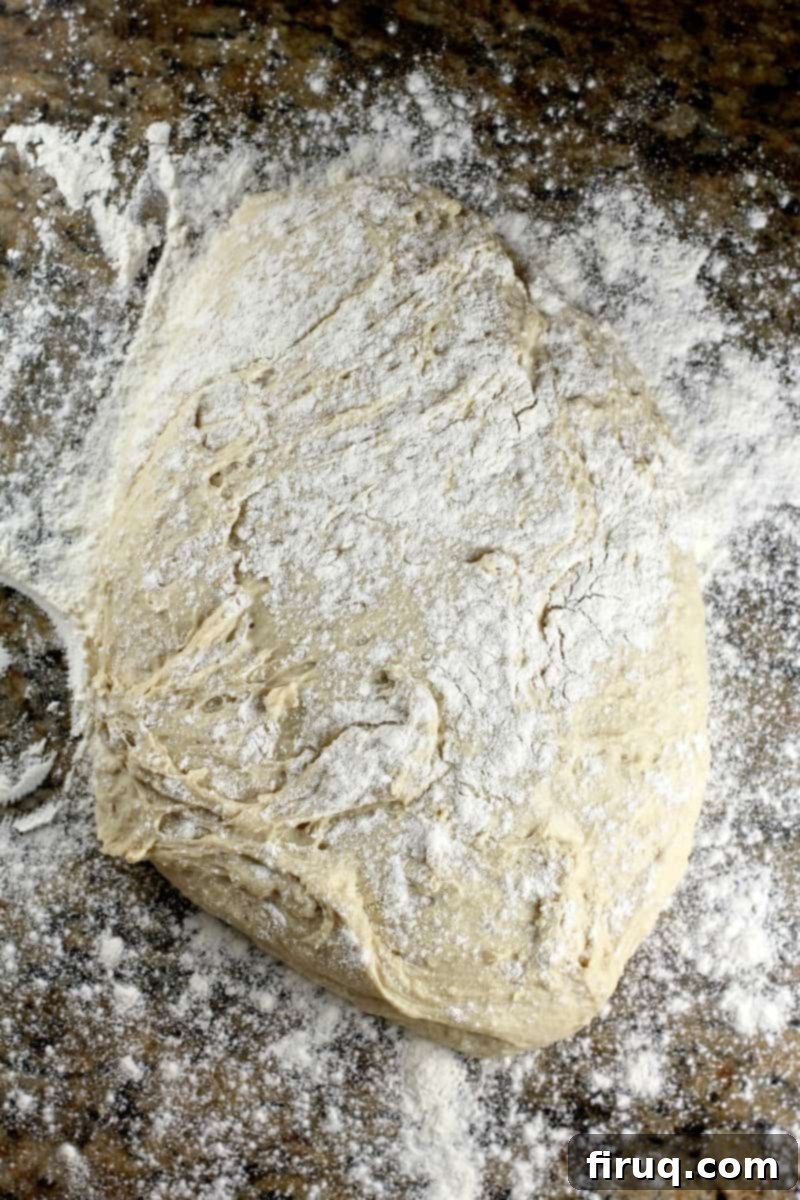
Once your dough has completed its glorious first rise and doubled in size, it’s time for the next steps to prepare it for baking:
- Divide and Shape: Gently turn the risen dough out onto a lightly floured surface. Using a knife or a bench scraper, divide the dough into two equal pieces. For each portion, give it a quick, gentle knead – about 10 turns or so – just enough to redistribute the gases and firm up the gluten structure. This quick knead helps to make the dough even more elastic and easier to roll out. Form each piece into a smooth ball, ready for stretching.
- Preheat Oven with Pizza Stone: For the best homemade pizza experience, a pizza stone is highly recommended. It absorbs and retains heat, mimicking the intense heat of a brick oven and ensuring an incredibly crispy crust. Place your pizza stone in the oven before turning it on, then preheat the oven to 450°F (232°C). Once the oven reaches temperature, allow the stone to heat for an additional 15-20 minutes. This extra time ensures the stone is thoroughly saturated with heat, which is crucial for achieving that perfect, evenly cooked crust. If a pizza stone isn’t available, a heavy baking sheet preheated in the oven will also work, though results may vary.
- Final Proof (while preheating): While your oven and pizza stone are intensely heating, your dough balls will undergo a slight secondary rise. This is entirely normal and desired, contributing to the final airy texture.
- Roll, Top, and Bake: On a well-floured surface, use a rolling pin to carefully roll out one piece of dough into a 12- to 14-inch round, or stretch it by hand to your desired thickness. For easy transfer, drape the rolled dough over your rolling pin. Open the oven, quickly slide the dough onto the scorching hot pizza stone. Work efficiently to add your preferred pizza sauce and toppings.
- Bake to Perfection: Immediately reduce the oven temperature to 425°F (218°C) to prevent the top from cooking too quickly. Bake for approximately 10-12 minutes, or until the crust is beautifully golden brown and the cheese is melted and bubbly. The exact baking time may vary based on your oven and chosen toppings. This recipe yields enough dough for two medium-sized pizzas, perfect for sharing or enjoying later!
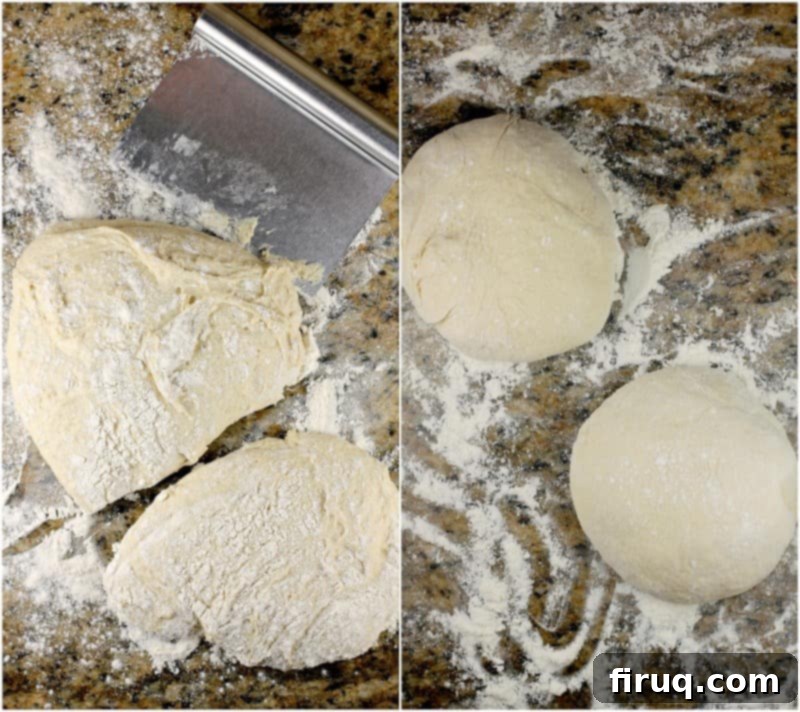
Can Beer Pizza Dough Be Made in Advance? Planning Your Pizza Night
Absolutely! This Sam Adams Beer Pizza Dough is an excellent candidate for advance preparation, making your future pizza nights even more effortless. Once the dough has completed its initial rise, been divided, and formed into individual balls, you can prepare it for storage. For best results, wrap each dough ball separately and tightly in plastic wrap, or place them in individual resealable bags, ensuring as little air as possible is trapped inside. Refrigerate the dough for up to 1-2 days. This slow, cold fermentation can actually enhance the dough’s flavor and texture even further, developing more complex notes.
When you’re ready to bake, remember to take the dough out of the refrigerator approximately 30-60 minutes before you plan to roll it out. Allowing the dough to come back to room temperature is crucial. This helps relax the gluten, making the dough much more pliable and easier to work with, preventing it from snapping back when you try to stretch it. It also ensures an optimal final rise and a light, airy crust.
Rapid-Rise or Regular Yeast? Understanding Your Leavening Agent
You have the flexibility to use either rapid-rise (also known as instant yeast) or active dry yeast for this recipe. The primary difference lies in their activation methods and the time they require. Rapid-rise yeast is specifically formulated to be fast-acting and typically does not require proofing. It can often be mixed directly with the dry ingredients, simplifying the process and cutting down on preparation time.
Active dry yeast, on the other hand, consists of larger granules and needs to be “proofed” or activated in warm liquid (in this case, our warmed Sam Adams beer) before being combined with the other ingredients. This step ensures the yeast is alive and ready to leaven your dough. If opting for regular active dry yeast, proof it in the warm beer for about 10 minutes, or until foamy, before proceeding with the addition of honey, olive oil, and flour. Both types will yield delicious results, but understanding their nuances helps ensure a successful rise.
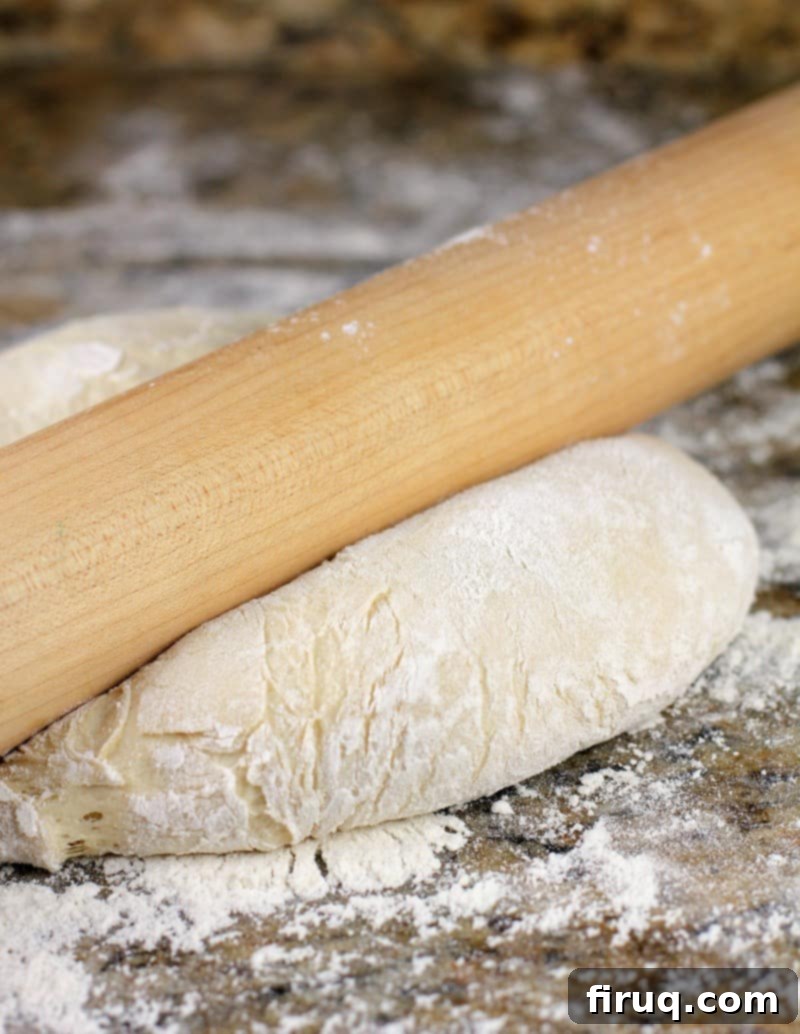
Mastering Homemade Pizza: Essential Tips for Success
Creating exceptional pizza at home is an art, and with a few key tips, you can elevate your Sam Adams Beer Pizza Dough to professional levels:
- Invest in Essential Equipment: If homemade pizza is a regular delight in your home, consider investing in a stand mixer and a pizza stone. A stand mixer with a dough hook makes the kneading process incredibly easy and consistent, ensuring proper gluten development without the arm fatigue. A pizza stone (or a heavy pizza steel) is a game-changer; it retains and radiates intense heat, leading to a much crispier crust that’s cooked evenly all the way through, mimicking a traditional brick oven.
- Flour Your Surface Generously: Always roll or stretch your dough on a liberally floured surface, such as a clean countertop. This prevents sticking and allows the dough to move freely as you work it into shape. Don’t be shy with the flour, but brush off any excess before adding toppings.
- Master the Transfer: Rolling out dough on a counter is one thing; getting it onto a hot pizza stone without incident is another. A clever trick is to drape the rolled dough over your rolling pin, then carefully unroll it onto your preheated pizza stone or baking sheet. Alternatively, a pizza peel generously dusted with semolina flour or cornmeal will allow the dough to slide off smoothly.
- Work Swiftly on the Stone: Once your dough touches the hot pizza stone, the cooking process begins immediately. The underside will start crisping up, and it will become less pliable. Therefore, be prepared to quickly shape your dough on the stone, add your sauce, cheese, and toppings without delay. Speed is key to prevent the bottom from overcooking before the toppings are even on.
- Monitor and Adjust Baking Temperature: Ovens can vary, and so can the moisture content of different toppings. After about 5 minutes of baking, peek at your pizza. If the crust or toppings seem to be browning too quickly, consider reducing the oven temperature to 425°F (218°C) or even 400°F (200°C). This adjustment ensures that the crust cooks through thoroughly and all your ingredients are perfectly melted and cooked without burning the top.
- Consider Parchment Paper for Ease: If you’re nervous about transferring the dough, you can roll it out on a piece of parchment paper. Then, transfer the parchment paper with the dough directly onto your hot pizza stone. This makes sliding the pizza in and out of the oven much simpler, especially for beginners.
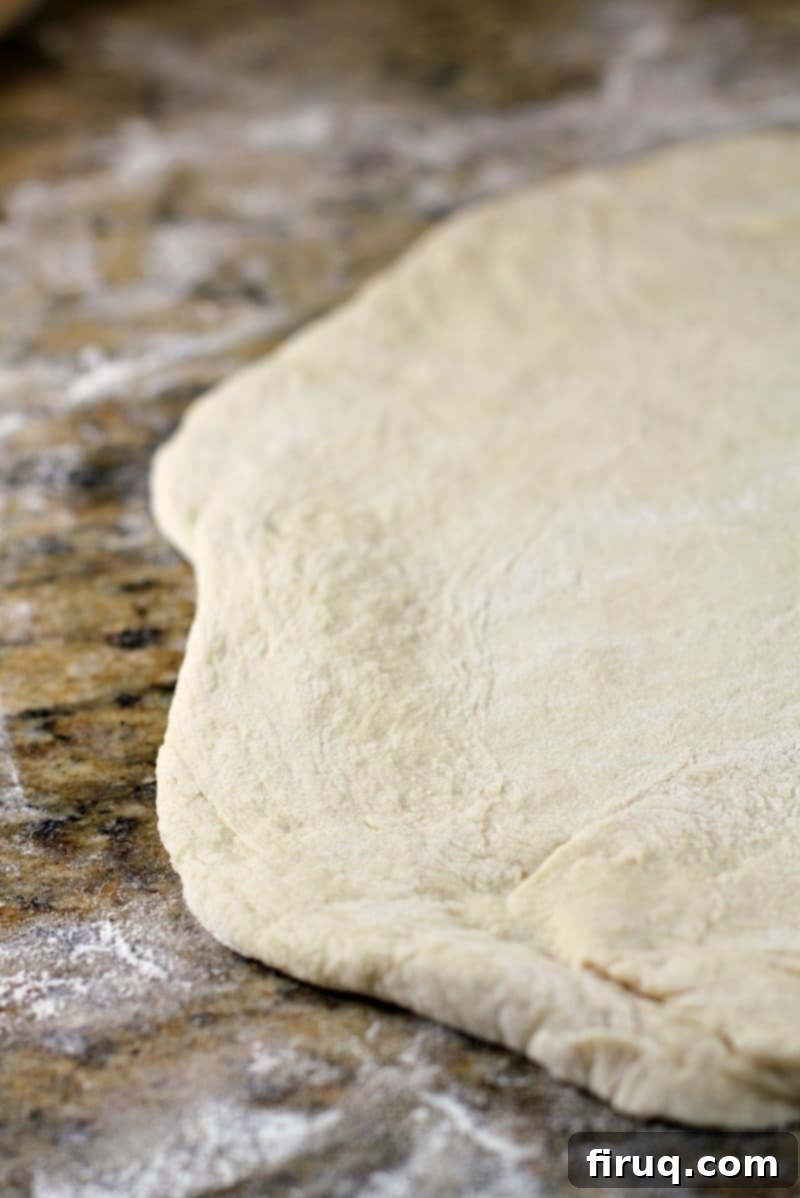
Inspiring Creations: Pizza Recipes Using Sam Adams Beer Pizza Dough
Now that you have the most flavorful homemade pizza dough, it’s time to unleash your culinary creativity! This Sam Adams Beer Pizza Dough serves as an exceptional base for a wide variety of pizza styles. Its robust flavor profile holds up beautifully against both classic and inventive toppings. Here are some of my favorite pizza recipes that truly shine when made with this special dough:
- French Onion Pizza
- Jalapeno Popper Pizza
- The Cuban Pizza
- Monte Cristo Pizza
- Chicken Cordon Bleu Pizza
Also check out my Homemade Pizza Sauce with wine and garlic.
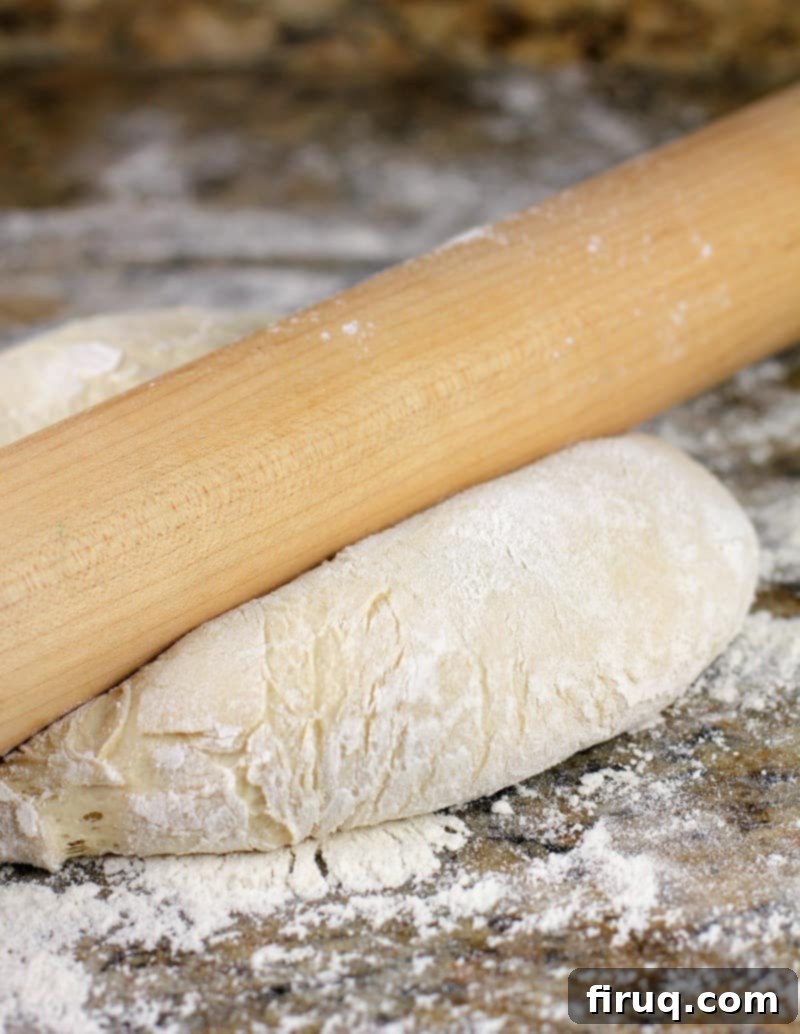
Sam Adams Beer Pizza Dough
Print
Pin
Rate
Equipment
-
stand-mixer
-
pizza stone
Ingredients
- 1 (12 oz) Sam Adams Boston Boston Lager beer
- 1 (¼ oz) packet Rapid-Rise yeast or active-dry yeast
- 1 Tbsp honey
- 1 Tbsp extra virgin olive oil
- 3-¾ cups ’00’ pizza flour 493 grams (see Notes)
- 1 Tbsp kosher salt
Instructions
-
Sit the beer in a bowl full of hot tap water 5-10 minutes to warm.
-
In the bowl of a stand mixer fitted with the dough hook, add the beer and yeast. Proof 2 minutes (5 minutes if using active dry yeast).
-
Add the honey and olive oil. With the mixer running on “stir”, add the flour and salt. Knead the dough 10 minutes.
-
Cover the bowl with a double layer damp paper towels and put in a warm place for the dough to rise until doubled, 1-½ to 2 hours.
-
Turn the dough out on a lightly floured surface and divide into 2 portions. Knead each 10 times to get it good and elastic.
-
Put the pizza stone in the oven, and heat oven to 450°F. Heat another 15 minutes to ensure the pizza stone is fully heated. While the oven is heating, the dough will rise a bit more.
-
Using a rolling pin, roll out one piece of dough into a 12- to 14-inch round. Move dough to the pizza stone and add toppings.
-
Reduce oven temperature to 425°F and bake for 10-12 minutes until crust is cooked through. Yields dough for 2 pizzas.
Notes
See the body of the blog post for details and tips not in the recipe card.
